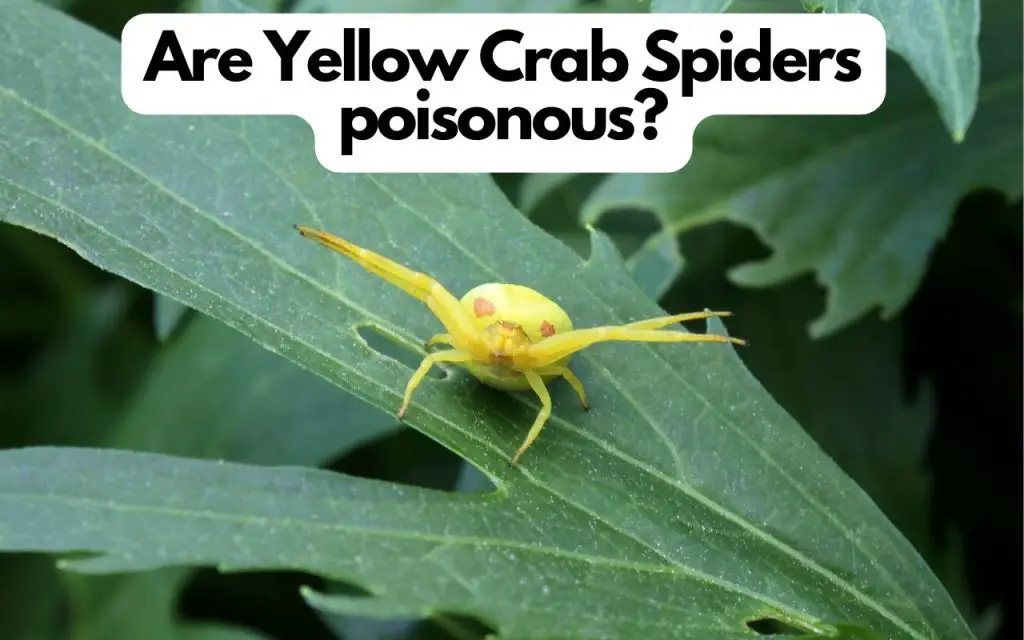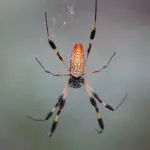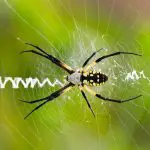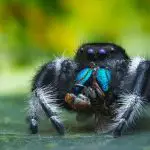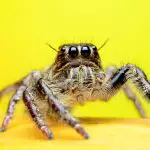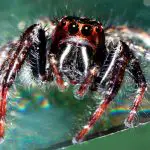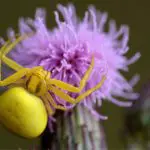The Yellow Crab Spider, also commonly known as the Goldenrod Crab Spider, is a fascinating denizen of North American and European gardens. Often having a livid yellow coloration, it really makes an impression if you’re lucky enough to find one.
Given their striking appearance, it’s perfectly normal to wonder whether this species is a danger to us. You can relax though, they are in no way a threat to humans, and like most spiders they prefer retreat to attack.
Keep reading to learn just how harmless, and incredible, these spiders are…
Are Yellow Crab Spiders poisonous (or venomous)?
To clarify, when it comes to spiders and other animals, the term we should really be using is ‘venomous’ rather than ‘poisonous’.
While the distinction may seem trivial, it’s important: a venomous creature injects toxins into its prey or a threat, while a poisonous organism is harmful if eaten or touched.
In fact, the only reason I use the term “poisonous” at all is because it is so commonly, albeit incorrectly, used. Now that we’ve got that sorted, let’s dive right into it: Are Yellow Crab Spiders venomous?
In simple terms, yes, they are. But before you let that tidbit of information send you into a panic, let me reassure you that they pose very little risk to humans. The venom of Yellow Crab Spiders is potent enough to paralyze or kill their prey, which are primarily flying insects.
As far as spider venom goes, it is pretty effective. In fact, I’ve even seen Crab Spiders take down Bumble Bees about twice their size.
However, it is generally not harmful to humans. In the rare cases that a Yellow Crab Spider does bite a human, the reaction is usually mild, more of which we will discuss later.
Other facts about Yellow Crab Spiders
Yellow Crab Spiders, scientifically known as Misumena vatia, are part of the larger family of Crab Spiders, named so for their uncanny resemblance to crabs.
They have the ability to walk sideways and even backwards, mimicking the movement patterns of their crustacean counterparts.
These spiders are remarkable hunters, known for their exceptional camouflaging abilities. Unlike many other spiders, Yellow Crab Spiders don’t weave webs to trap their prey; instead, they rely on their exceptional stealth and ambush their prey.
Because they rely so heavily on camouflage to catch their prey, you often find them on yellow flowers like Buttercups. Yellow flowers for yellow spiders, it makes sense when you think about it!
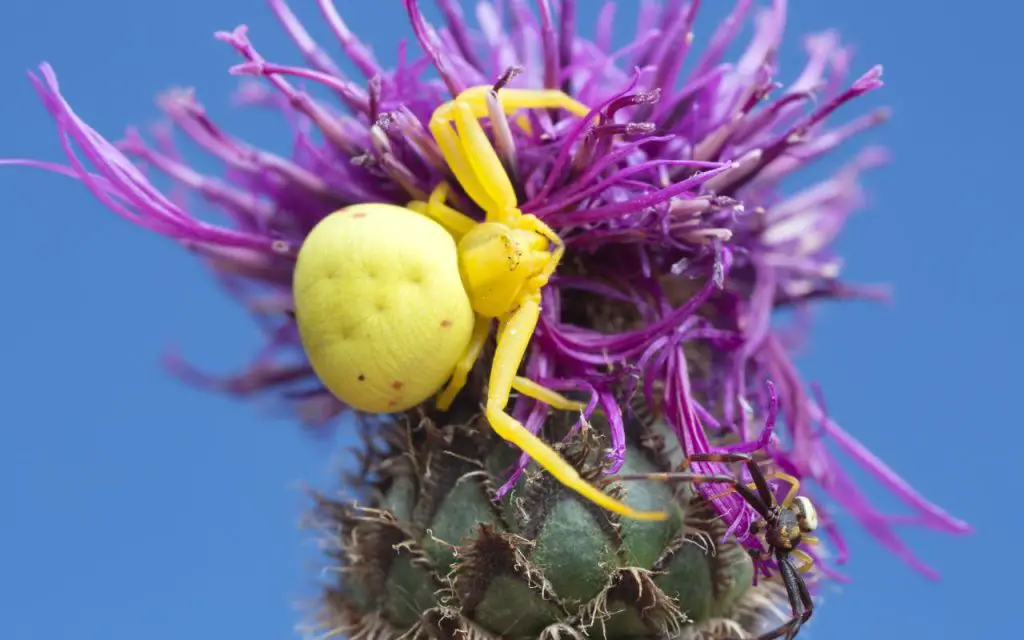
Where are Yellow Crab Spiders found?
These fascinating spiders are widely distributed across the world. They are predominantly found in North America, Europe, and parts of Asia.
You can usually spot them in open grassland, meadows, and gardens, making the most of their camouflaging abilities against yellow flowers.
Preferred habitat
Yellow Crab Spiders prefer habitats that allow them to utilize their color for camouflage effectively. This usually means areas abundant in yellow or white flowers.
They position themselves strategically on these flowers and wait patiently for unsuspecting insects to approach, upon which they ambush their prey.
Like many spiders, Yellow Crab Spiders are happy to take advantage of anthropogenic (human-made) habitat. A nice lawn with some Daisies and Buttercups suits them just fine.
Are they helpful or harmful to your garden?
| Pros | Cons |
|---|---|
| 1. Excellent pest controllers | 1. Can frighten people due to their appearance |
| 2. They eat harmful insects | 2. They might decrease the population of pollinators |
| 3. No harm to plants | 3. If startled, they may bite |
In my experience, the presence of Yellow Crab Spiders in your garden is generally beneficial. They help control harmful insects, hence acting as natural pest controllers. However, they do also prey on pollinators, which may slightly affect the pollination process in your garden.
What does a Crab Spider bite look like?
A Yellow Crab Spider’s bite is usually harmless to humans and rarely occurs unless the spider is threatened. If bitten, you may experience minor symptoms such as localized pain, redness, and slight swelling, similar to a mild bee sting.
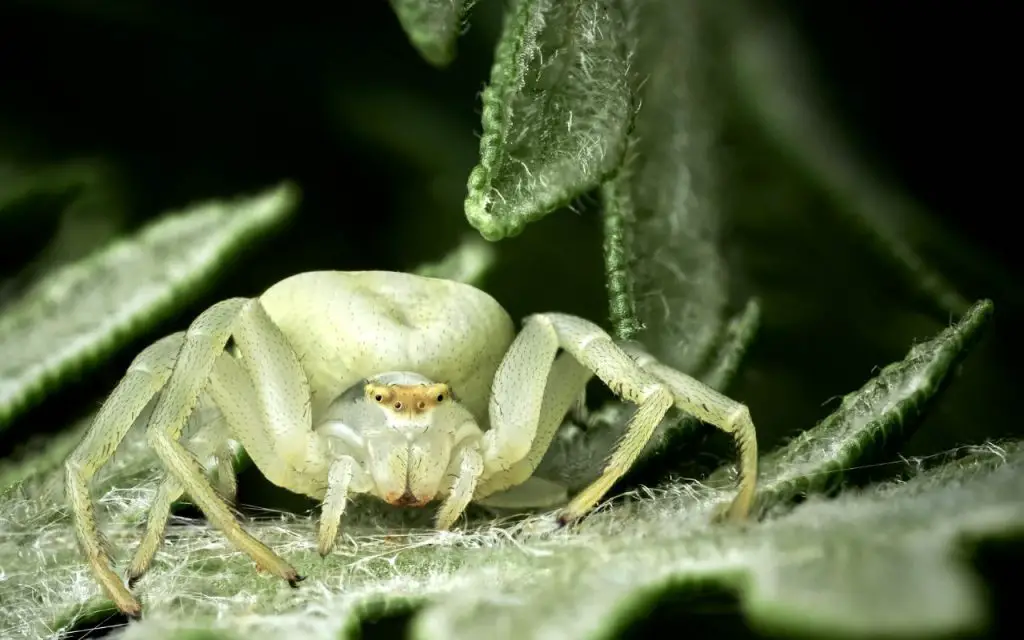
What to do if you get bit
If you’re bitten by a Yellow Crab Spider, there’s no need for panic. First, clean the area thoroughly with warm water and soap. Then, apply a cold compress to reduce swelling. If symptoms persist or if you notice any allergic reactions, seek immediate medical attention.
Remember, allergic reactions don’t vary according to the potency of the venom involved. Instead, they vary according to the individual bitten. Any person can have an allergic reaction to any bug bite.
So if you get hives, dizziness, or swelling or the face or throat – call the emergency services immediately.
Other kinds of Crab Spiders
As I’ve journeyed through the fascinating world of spiders, I’ve encountered several other types of Crab Spiders. Here’s a brief rundown of them:
- The Green Crab Spider: This species, known scientifically as Misumessus oblongus, is predominantly green, allowing it to blend seamlessly with leaves and green flowers. They are found mostly in Canada and the USA.
- Brown Crab Spider, aka Ground Crab Spider (Xysticus): The Brown Crab Spider prefers to dwell on the ground rather than on flowers. They have a brown or grey body, which helps them blend with soil or tree bark.
- White Crab Spider: White Crab Spiders are exactly the same species as the Yellow Crab Spiders. Incredibly, these spiders can change color, just like a chameleon. If they aren’t any yellow flowers around, a Yellow Crab Spider will change to white over the course of a few weeks.
- Giant Crab Spiders: The term “Giant Crab Spider”, is actually an alternative common name for Huntsman spiders, which are unrelated to true Crab Spiders.
Are Yellow Crab Spiders poisonous? Final thoughts…
So, to wrap it up: Yes, Yellow Crab Spiders are venomous, but they are generally harmless to humans. Their primary role in nature is that of a predator, helping control the population of certain insects. As such, they can be considered beneficial to your garden, despite their somewhat menacing appearance.
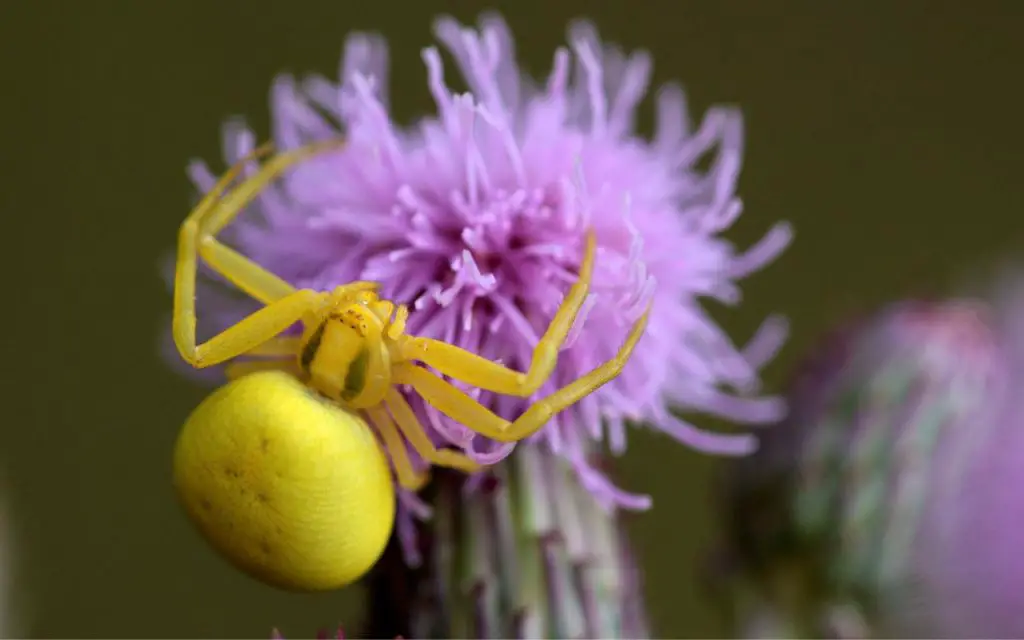
Are crab spiders harmful to humans?
Crab Spiders are not harmful to humans, and will avoid contact if given the choice. They do not go out of their way to bite us, or interact with us. Unlike many other species of spider, they also prefer not to enter our homes.
Can you touch a crab spider?
It’s best not to touch a Crab Spider. Though they are unlikely to bite you, they are usually busy when you see them. If you spot a Yellow or White Crab Spider perched on a flower, it is actually lying in ambush, waiting for a fly or bee to land. If you disturb them you interrupt this process, and could cost them a meal.

